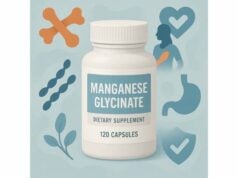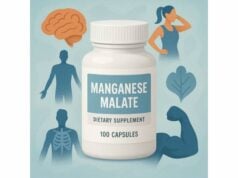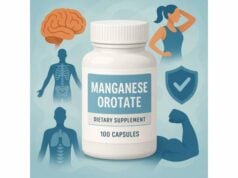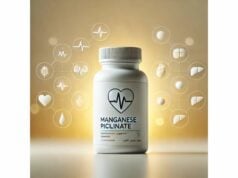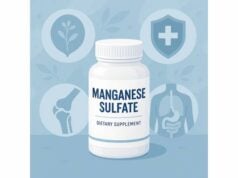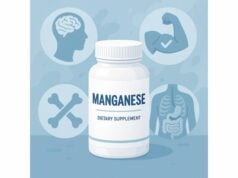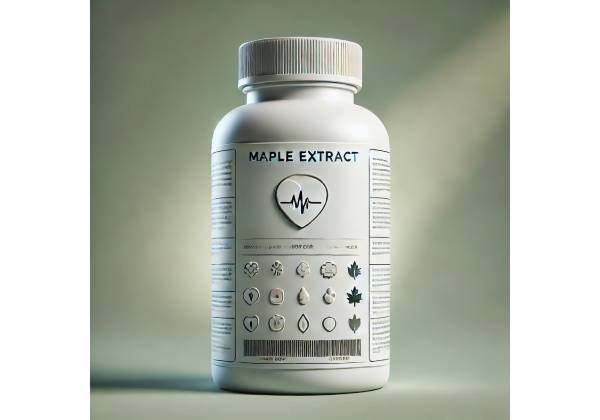
Maple extract sits at an uncommon crossroads: part culinary flavor, part science-backed source of plant phenolics concentrated from the sap of maple trees—primarily sugar maple (Acer saccharum). Beyond the familiar syrup, researchers have developed phenolic-enriched maple syrup extracts (often abbreviated MSX) that concentrate antioxidant and anti-inflammatory compounds such as quebecol, gallic acid, and catechins. Early laboratory and animal studies suggest potential support for cellular defense against oxidative stress, moderation of inflammatory signaling, and even synergy with antibiotics against stubborn biofilms. Consumers encounter “maple extract” in three forms: the baking flavoring used drop-by-drop in recipes, phenolic-enriched extracts sold as dietary supplements, and topical actives used in skincare. This guide explains the differences, outlines practical ways to use maple extract safely, and summarizes where the evidence stands—what it can reasonably do now, what remains promising but preliminary, and how to choose a product that matches your goals.
Key Facts
- Lab and animal data show antioxidant, anti-inflammatory, anti-glycation, and anti-biofilm activity from phenolic-enriched maple extracts.
- Consumer uses include daily antioxidant support, gentler post-meal glucose strategies with whole foods, and cosmetic antioxidant support in skincare.
- No established clinical dose exists; common supplement labels provide 150–500 mg/day of standardized extract—start low and follow directions.
- Avoid if you have maple product allergies, are pregnant, or take medications affected by polyphenols without medical guidance.
Table of Contents
- What is maple extract?
- Benefits and how it works
- How to use it and dosage guidance
- Choosing quality and types
- Mistakes, safety, and who should avoid
- Evidence and research summary
What is maple extract?
Maple extract refers to concentrated compounds derived from maple sap or syrup. Two very different products share this name:
- Culinary maple extract (flavoring). A concentrated food flavor used by the drop in baking and beverages. It’s designed to deliver taste—not measurable polyphenol doses—and usually includes alcohol, water, and natural/artificial flavors.
- Phenolic-enriched maple syrup extract (MSX). A standardized botanical ingredient developed by researchers to concentrate the phenolic fraction found in maple syrup. These phenolics include phenylpropanoids, benzoic acids, lignans, flavanols, and unique maple-born molecules (e.g., quebecol that forms during syrup heating). MSX typically appears in capsules or powders and, in cosmetics, in serums or creams as an antioxidant active.
Why concentrate phenolics from syrup? Pure syrup contains sugar plus small amounts of minerals and phenolics. By isolating the phenolic portion, scientists can test sugar-free fractions for bioactivity such as antioxidant protection, anti-inflammatory effects, anti-glycation activity (relevant to protein “browning” and stiffness), and impacts on microbial biofilms.
What sets maple phenolics apart?
- Quebecol and analogs: unique to maple processing, with emerging antioxidant and anti-inflammatory profiles.
- Broad phenolic spectrum: catechins, gallic and syringic acids, vanillin derivatives, and lignans, giving overlapping and complementary mechanisms.
- Water-soluble profile: suits capsules and beverages, and allows formulating into water-based skincare.
Where you’ll see it used:
- Dietary supplements marketed for antioxidant support, healthy aging, or glucose management adjuncts (evidence is preliminary).
- Functional foods and beverages that add a defined phenolic dose without syrup’s sugars.
- Topical skincare positioned for antioxidant, soothing, and anti-glycation benefits.
Benefits and how it works
1) Antioxidant defense
Phenolic-enriched maple extracts neutralize reactive oxygen species in test systems and protect skin and other cells from oxidative injury. In human skin cell models (keratinocytes), an MSX preparation reduced hydrogen peroxide and methylglyoxal–induced cytotoxicity, a type of stress tied to dullness, barrier disruption, and photoaging. In practice, this positions MSX as a supportive antioxidant—to be used alongside, not instead of, fundamentals like sunscreen, varied plant-rich diets, and sleep.
2) Anti-glycation activity
“Glycation” is the non-enzymatic binding of sugars to proteins, forming advanced glycation end products (AGEs) that stiffen tissues and accelerate visible aging. MSX has demonstrated anti-glycation effects in vitro and preserved normal cell health under glycation stress. For everyday life, this suggests MSX may complement diet and lifestyle strategies that moderate post-meal glucose spikes (fiber, protein, movement) rather than act as a stand-alone shield.
3) Anti-inflammatory signaling
Mouse and cell studies indicate that MSX can modulate inflammatory pathways—downshifting cytokines and proteins that escalate tissue irritation. These findings support the use of MSX in cosmetic soothing formulas and as a dietary antioxidant for people looking to expand their polyphenol variety. The effect is adjunctive; it should be framed as part of a larger routine that includes core medical care when needed.
4) Antimicrobial synergy and biofilm effects
A polyphenolic maple extract has been shown to potentiate antibiotic susceptibility and reduce biofilm formation in several pathogens under laboratory conditions. Biofilms—slimy, protective communities—are notoriously hard to disrupt. While these results don’t translate directly into a home remedy for infections, they point to a mechanistic rationale for future combination strategies and inform potential oral hygiene or surface care prototypes.
5) Brain health signals (preclinical)
A chemically standardized MSX reduced β-amyloid aggregation and dampened neuroinflammatory markers in cell and worm models. That’s promising but early. No clinical trials have yet demonstrated cognitive benefits in people, so consumers should treat these results as hypothesis-generating, not proof.
What maple extract is unlikely to do
- It will not replace medical treatments for infections, diabetes, or inflammatory diseases.
- It is not a free pass to ignore diet quality; phenolics support cells, but whole-diet patterns drive outcomes.
- It will not provide drug-like effects for memory, pain, or immunity based on current evidence.
Bottom line on benefits
Maple phenolic extracts offer a broad, gentle polyphenol profile with antioxidant, anti-glycation, anti-inflammatory, and anti-biofilm signals in preclinical research. In real life, that’s best used for long-game cellular support—as a complementary ingredient in food, supplement, or skincare routines—rather than a quick fix.
How to use it and dosage guidance
Important distinction: There’s no established clinical dose for phenolic-enriched maple extract in humans. Products vary widely in phenolic content and standardization. Always follow your product’s directions and consult a clinician if you have a medical condition or take prescriptions.
Typical product formats and practical ranges
- Dietary supplements (capsules/powders). Many brands provide 150–500 mg/day of standardized phenolic-enriched extract, often split once or twice daily with meals. Start at the lower end for 2 weeks, monitor tolerance, then consider titrating within the label range.
- Functional beverages or drops. Mix into water, tea, or smoothies according to label guidance; these usually target daily phenolic intake rather than specific conditions.
- Topical skincare (serums/creams). Cosmetic actives list MSX at 0.1–2%; higher percentages are not necessarily better—compatibility with your base formula and skin type matters more.
Timing tips
- With meals: Taking phenolic supplements with food may improve tolerance and align with post-meal oxidative and glycation dynamics.
- Split dosing: If a label suggests two capsules daily, morning and evening with meals is reasonable.
- Topicals: Apply antioxidant serums after cleansing and before moisturizer, morning or evening. In the daytime, always pair with broad-spectrum sunscreen.
Stacking with other nutrients
- Synergists: Vitamin C, vitamin E, carotenoids, green tea catechins, and diverse fruit/vegetable polyphenols.
- What to avoid at the same moment: Very high-dose iron or zinc can interact with certain polyphenols; if you take these minerals therapeutically, separate by a few hours.
Culinary options for everyday support
Prefer getting polyphenols from food first. If you enjoy maple flavor, consider small amounts of pure syrup as part of a balanced diet, paired with protein and fiber to blunt glucose spikes. For concentrated phenolics without added sugar, MSX-style products are the intended route—follow labels.
Special populations
- Pregnancy or breastfeeding: Insufficient data—avoid unless your clinician approves.
- Children: Use food sources (balanced diets) rather than extracts unless advised by a pediatric professional.
- Diabetes or glucose concerns: Treat MSX as an adjunct to medical care. Monitor blood glucose when adding new supplements and discuss with your clinician.
When to expect results
Polyphenol support is a slow-build strategy. Look for subtle changes in skin tone comfort with topicals over 4–8 weeks and general wellness markers (energy, recovery) over 6–12 weeks—always recognizing that many factors influence how you feel.
Choosing quality and types
1) Know the form you’re buying
- Flavor extract: For recipes; does not guarantee meaningful phenolic content.
- Phenolic-enriched extract (MSX or similar): For supplements and cosmetics; look for standardization and a Certificate of Analysis (CoA).
2) Look for clear standardization
Quality labels specify total phenolics (e.g., as gallic acid equivalents) or identify signature molecules (such as quebecol) per serving. Products without any marker of content are hard to compare.
3) Transparent sourcing and manufacturing
Reputable brands disclose maple species, origin (e.g., North American syrup), and extraction method. A batch CoA should confirm identity, purity, heavy metals, microbial limits, and solvent residues.
4) Formulation matters
- Capsules/tablets: Look for minimal excipients and protective packaging.
- Powders: Choose moisture-resistant containers; phenolics can degrade with humidity and heat.
- Topicals: Seek air-tight or air-restrictive packaging and antioxidant co-actives (e.g., vitamin E) to bolster stability.
5) Third-party testing
Certifications from independent labs (identity and contaminant screens) improve confidence—especially for supplements sold online.
6) Sustainability and authenticity
Maple products come from managed forests with seasonal taps. Choose brands that communicate forest stewardship, worker safety, and traceable supply chains.
7) Red flags
- Grandiose disease claims (“cures,” “reverses”)—these are not allowed for supplements.
- Labels without serving amounts or standardization.
- Vague blends where “maple” appears low on the ingredient list behind fillers.
Mistakes, safety, and who should avoid
Common mistakes
- Confusing flavor extract with phenolic extract. Baking extract adds taste, not a measured phenolic dose.
- Expecting drug-like speed. Polyphenols support long-term cellular resilience; they’re not quick fixes for pain, infections, or blood sugar spikes.
- Neglecting overall diet. A supplement cannot offset low produce intake, poor sleep, or inactivity.
Side effects and tolerability
Maple phenolic extracts are generally well tolerated in available studies. Possible reactions include mild digestive upset, headache, or skin sensitivity when used topically. Reduce dose, take with food, or stop and reassess if this occurs.
Interactions
- Medications: Polyphenols can influence transporters and enzymes. Use caution if you take warfarin, antiplatelets, chemotherapy, or thyroid medication. Discuss with your clinician before starting any new supplement.
- Mineral absorption: Polyphenols can bind minerals; separate high-dose iron, zinc, or calcium by 2–4 hours.
Who should avoid or seek guidance first
- Pregnant or breastfeeding individuals: Insufficient human data—avoid or get personalized advice.
- People with maple product allergies or severe tree pollen allergy history: Avoid or patch-test topicals carefully.
- Children: Use dietary patterns rather than extracts unless a clinician recommends otherwise.
- People preparing for surgery: Stop non-essential supplements 1–2 weeks prior unless your surgeon advises otherwise.
Topical usage notes
- Patch-test new formulas on the inner forearm for 48 hours before facial use.
- For daytime wear, layer under sunscreen; antioxidants do not replace UV filters.
Overuse cautions
More is not better: very high polyphenol loads can upset the stomach or, paradoxically, create pro-oxidant effects in test systems. Stay within label ranges and rotate diverse polyphenol sources from foods.
Evidence and research summary
What we have strong signals for (preclinical):
- Antioxidant protection in skin and colon cells under oxidative and glycation stress. This supports topical use as a cosmetic antioxidant and dietary use for general oxidative balance.
- Anti-glycation activity that may help maintain protein integrity in cellular models—relevant to healthy aging themes.
- Anti-inflammatory modulation in mouse peritonitis and proteomic analyses—consistent with broader patterns seen across plant polyphenols.
- Antimicrobial synergy and biofilm reduction with antibiotics in vitro—intriguing for dental hygiene prototypes and infection control research.
What remains preliminary:
- Cognition and neuroprotection. MSX reduced β-amyloid aggregation and neuroinflammation in non-human models; human trials are needed to evaluate cognition or progression outcomes.
- Glycemic control in people. Anti-glycation in cells does not prove real-world glucose or HbA1c changes. Human feeding studies would clarify magnitude and relevance.
- Dose–response and standardization. Not all “maple extracts” are equal; we need head-to-head comparisons of standardized phenolic content and bioavailability in humans.
How to read the current science as a consumer:
Treat MSX as a broad-spectrum polyphenol source—much like cocoa flavanols or grape seed extract, but with maple-unique molecules that diversify your phenolic intake. Use it to augment an already solid routine: plenty of plants, sleep, movement, sun protection, and clinician-directed care. Expect gentle shifts over weeks to months, not overnight transformations.
Practical synthesis:
- If you want dietary support and prefer capsules, pick a product that states standardized total phenolics and stay within 150–500 mg/day unless your clinician suggests otherwise.
- If your goal is skincare, choose a serum or cream listing maple extract 0.1–2%, pair with daily sunscreen, and evaluate skin comfort and tone over 4–8 weeks.
- If you mainly love maple flavor, enjoy pure syrup in small amounts alongside protein and fiber; for concentrated phenolics without added sugar, use a standardized extract instead of increasing syrup intake.
References
- Phenolic-Enriched Maple Syrup Extract Protects Human Keratinocytes against Hydrogen Peroxide and Methylglyoxal Induced Cytotoxicity 2020 (Experimental Study)
- Uncovering the anti-inflammatory mechanisms of phenolic-enriched maple syrup extract in lipopolysaccharide-induced peritonitis in mice: insights from data-independent acquisition proteomics analysis 2023 (Experimental Study)
- Effects of a Standardized Phenolic-Enriched Maple Syrup Extract on β-Amyloid Aggregation, Neuroinflammation in Microglial and Neuronal Cells, and β-Amyloid Induced Neurotoxicity in Caenorhabditis elegans 2016 (Experimental Study)
- Polyphenolic Extract from Maple Syrup Potentiates Antibiotic Susceptibility and Reduces Biofilm Formation of Pathogenic Bacteria 2015 (Experimental Study)
- Anti-glycation and anti-oxidative effects of a phenolic-enriched maple syrup extract and its protective effects on normal human colon cells 2017 (Experimental Study)
Medical Disclaimer
This article is informational and does not replace professional medical advice, diagnosis, or treatment. Do not use maple extract—dietary or topical—to diagnose, treat, cure, or prevent disease. If you are pregnant or breastfeeding, have chronic conditions (including diabetes, autoimmune disease, or bleeding disorders), take prescription medications, or plan surgery, consult a qualified healthcare professional before use. Discontinue and seek medical advice if you experience unexpected symptoms. If you found this guide helpful, please consider sharing it on Facebook, X (formerly Twitter), or any platform you prefer, and follow us for more evidence-based wellness explainers. Your support helps us continue creating high-quality content.

